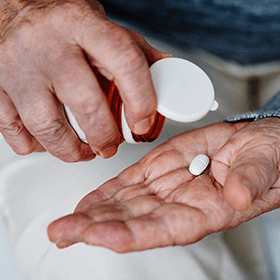By Dr Tom Micklewright
13 Ways to Combat Recurrent UTIs
Urinary tract infections (UTIs) are one of the leading causes of health care expenditure in people of all ages, responsible for nearly 10 million doctor visits each year in America alone.
Statistics show that 50% of women have had a UTI at some point in their lives, 20% of whom will have another UTI. 30% of the women who had two UTIs, will then have a third UTI, and 80% of the women having have three UTIs will have recurrent UTIs from that point onwards.
What makes a UTI 'recurrent'?
While the National Institute for Health and Care Excellence (NICE) argue that UTIs only become recurrent once they have been contracted more than three times a year, or more than twice in six months, we would suggest that any UTI that returns after being treated the first time, might be recurrent responding accordingly.
We do have to be careful with recurrent or chronic UTIs, however. Specific antibiotics may have been used to treat a particular strain of UTI in the past and bacteria can become resistant to antibiotics over time. The doctor you speak to when you book an appointment with us may want to test your urine to make sure your latest UTI was caused by a different type of bacteria, requiring different antibiotics altogether.
Recurrent UTI treatment
NICE note that recurrent UTIs:
- Include lower and upper urinary tract UTIs equally
- May occur due to relapse, with the infection being caused by the same strain of bacterium
- May occur due to reinfection, with the infection being caused by a different strain or species of bacterium
- Are particularly common in women, as we have seen already
With this in mind, we present seven measures you can take to reduce the risk of a UTI developing in the first place.
- Thoroughly cleaning your genitals. Avoid harsh or strongly scented cleansing agents that might inflame the urethra, however.
- Urinating immediately after sex. Don't fight the urge. Urinating after sex flushes bacteria and microbes out of the urinary tract without you having to think about it.
- Not holding it in. Encourage the regular flushing of the urinary tract by staying hydrated, drinking 6-8 glasses of water a day and emptying your bladder as soon as you feel the need.
- Wiping from the front. If you aren't already, get into the habit of wiping from your genitals back towards your buttocks to avoid bringing anal bacteria forwards.
- Using traditional, lubricated condoms. Spermicide-treated condoms can trigger vaginal inflammation, unlubricated condoms can stress vaginal tissues, and flavoured condoms can promote bacterial growth avoid at all costs.
- Avoiding using a diaphragm. Particularly if you have been prone to UTI infections in the past. Diaphragms have been known to promote the growth of E. coli a bacterium responsible for 85-90% of UTIs.
- Wearing clean, breathable underwear. Synthetic fabrics trap in moisture, creating fertile ground for the growth of bacteria.
And six plans of attack to make the UTI less disruptive once it has developed:
- Paracetamol. Nearly always available over the counter, paracetamol can alleviate the pain associated with UTIs.
- Ibuprofen. Reducing inflammation is ibuprofen's greatest strength, thanks to its anti-inflammatory and analgesic properties.
- Heat pads or hot water bottles. Heat to be warm, but not hot, and then place on your stomach, back or between your thighs to minimise any pressure or discomfort caused by the UTI.
- D-mannose. A supplement that Kranjec et al. (2014) found to reduce diarrhoea, nausea and vaginal burning in non-pregnant women suffering with UTIs.
- Lactobacillus. A natural remedy mentioned in the NHS guidelines for the treatment of UTIs, but they themselves concede it's not clear...if lactobacillus [helps].
- Cranberry juice. One that we advise against, as research suggests that cranberry products [do] not significantly affect UTI symptoms. They do have a small positive effect, but not enough of one in isolation.
Most popular
Related articles

How to Prevent a UTI

Over the Counter: UTI Treatment